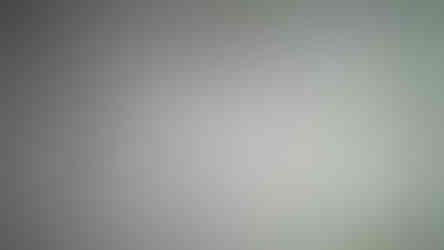Пътуване на микро- и нанониво!
- CERAMIC BEEHIVES

- 16.03.2021 г.
- време за четене: 3 мин.
Актуализирано: 24.01
Вероятно знаете, че нашият свят на микрониво е още по-голям, по-сложен и също много интересен. Да! Интересен!
Вълнуваме се да ви поканим да наблюдавате с нас превръщането на глината в твърдо тяло и да разберете какво прави керамиката толкова добър материал за направата на кошери.Останете до края, за да раберете защо я предпочитаме пред дървото.
Нека скочим на микрониво с нашия нов микроскоп (всички снимки са оригинални).
Глината се намира в изобилие в природата. Важен момент в историята е моментът, в който хората откриват, че когато смесят глината с вода, те могат да оформят и изпекат множество потребни инструменти. Това е началото на керамичния занаят - един от най-старите занаяти в света, датиращ няколко хиляди години пр.н.е.
И така, имаме си ние едно находище, откъдето получаваме глина за пчелните кошери. Това е природа, чиста природа в нейната изящна красота! Неповторима е по състав, тъй като в света няма две глинени находища с еднакво съдържание. Ето снимката на структурата на необработената глина за нашите керамични кошери, веднага след като е била събрана от находището.

Да, изглежда много грубо и много нехомогенно, което на макрониво изглежда като много рохка почва, която не може да се използва за нищо друго освен за градинарство.
За да я пригодим за дом вместо за градина, започваме обработката на глината. Първата стъпка е смилането. Смиламе глината така, че да няма частица по-голяма от 1 мм. Ето как изглежда това под микроскоп с увеличение 1600 :)

Да, сега започва да прилича на тесто, от което ще се получат керамичните плочи. За да подобрим свойствата, добавяме вода, каолин, и още няколко съставки (майсторите никога не казват цялата рецепта :)), разбъркваме добре и.... Voila!
Ето как изглежда сега хомогенизираната структура под микроскоп:

Време е за сушене и печене. За да придобие здравата плътна форма, глината трябва да се изпече на температура между 900C-1200C. Това, разбира се, е относително, защото конкретната температура на печене зависи много от състава на глината.
О! Резултатът е красив и бляскав (вижте по-долу)! Вляво е изпечена бяла глина, а вдясно е изпечена червена. Ето как изглеждат керамичните плочи на кошера, когато се увеличат повече от 1000 пъти.
Тук е мястото да отбележим, че съществуват три типа керамика. Най-просто казано, това са груба, фина и порцелан. Основната разлика между тях е в едрината на частиците, която определя и порьозността на структурата.
Нашите кошери се произвеждат от фина керамика. Тя има повече пори от порцелана, през които "диша". В същото време, след изпичане, влагопоглъщаемостта е относително ниска. Ето и едно важно правило: колкото по-малко вода се абсорбира, толкова по-дълга е издръжливостта и по-продължителна експлоатацията.
Понеже често сравняваме керамичните кошери с дървените, нека да разгледаме как изглежда един дървен кошер под микроскоп.

Дървото е страхотен материал, но дали е най-добрият избор за кошери?
Когато е живо, то е дом на милиони бактерии и микроорганизми, които продължават да живеят в него дори след като бъде отсечено. Те осигуряват и естествения процес на гниене. С течение на времето дървесният лигнин (който дава здравината на материала) започва да се разтваря, правейки дървото ронливо, крехко и отслабено. И тук идва мястото на обитаващите дървесината бактерии, които косвено влияят върху гниенето. Те също могат да си сътрудничат с други бактерии или гъбички, причиняващи гниене, което прави дървото предразположено към гъбична атака. Пчеларите използват различни методи за обработка на дървото, които да увеличат експлоатационния му срок, но качеството на материала продължава да намалява с времето. Това е една от причините да твърдим, че керамиката е много по-добър материал за изработката на кошери. Всъщност, последните ни изследвания показват, че
керамичните кошери имат срок на експлоатация 50 години!
Да сравним сега структурата на дървото и керамиката на снимките. Естествената структура на дървото е силно влагоабсорбираща. Това се отразява не само на влажността в кошера, но и на температурата, тъй като водонасищането в различните части на дървото не е равномерно. Какво се случва тогава? За това говорим в нашата статия за топлопроводимостта.
Нека направим историята още по-интересна накрая.
Използвахме специализиран трансмисионен електронен микроскоп на БАН за заснемане на структурата на изпечената керамична плоча от мергел на нанониво (модел: ТЕМ JEOL JEM 2100). И ето как изглежда мергелната глина на нанониво:

ВИЖТЕ ПОДРЕЖДАНЕТО НА ЧАСТИЦИТЕ! ВИЖТЕ ФОРМАТА! НЕ Е ЛИ НЕВЕРОЯТНО?! На нанониво, нашите плочи имат точно структурата, която пчелите обичат! Вярваме, че това има значение и щастливите ни пчели го доказват! :)
Надяваме се, че пътуването на микрониво ви е харесало. Ако ви е интересно, ще се радваме да ни гостувате на макрониво :) и да ви въвлечем в процеса на създаването на керамични кошери.








Коментари